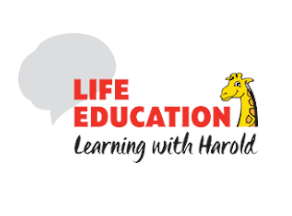

Iodine is a mineral. It’s found naturally in rocks, soils and pools of salty underground water (“brine”). We eat it in iodised salt, and in the flesh (meat) and liquids of plants and animals. Seafoods (fish, shellfish, seaweed) are a great natural source of iodine.
Because NZ soils don’t naturally contain a lot of iodine, neither do our plants and animals. We need to make sure we are getting enough iodine in our food. The iodine in half a teaspoon of iodised salt is enough for a 9- to 13-year-old child’s daily needs.
Iodine is needed by our thyroid gland to make hormones (chemical messengers) that manage our growth, appetite, energy balance, brain and sexual development.
Iodine is a mineral element. It forms a number of compounds and salts, many of which – like potassium iodide – are white. It’s present in small amounts in mineral deposits or soils above ground and salty brine pools beneath the earth’s surface. It’s also in the bodies of plants and animals, especially ones that live in the sea.
Natural sources include sea fish, shellfish, and seaweeds. It’s also in dairy products and eggs, provided the animals we get these from have had enough iodine in their diets. It can be in plants if the soil they were grown in is iodine rich – but unfortunately New Zealand soils are generally not. To help us get enough iodine, potassium iodide is added to regular salt (sodium chloride) to make iodised salt which we can choose to use: just half a teaspoon will meet a child’s daily iodine needs. Since 2009 in New Zealand, iodised salt must be used to make commercial non-organic breads. People who manufacture (make) other processed foods can also choose to add it to increase their iodine content.
We only need a tiny amount, but iodine is key for making the thyroid hormones which we need for regulating our energy balance, appetite, growth and development. It is critical for normal nerve function, sexual development and brain (mental) development.
Too little iodine (a deficiency) can cause conditions like goitre (“goy-ter”) in which the thyroid gland swells up creating a bulge in the neck. It can also stunt growth in children. In unborn babies and young children, a deficiency can seriously hinder mental development. With low-salt diets and naturally low iodine levels in NZ soils, people really need to make sure they get enough iodine. You are extremely unlikely to ever eat too much naturally.
Iodine is the heaviest essential mineral nutrient, and named for the violet/purple fumes it gives off when heated. It’s chemically related to chlorine and bromine and – like them – can be used to clean swimming pools. But pool water isn’t recommended as an iodine source!
|
Food – and serve size |
Iodine (μg/100 g or 100 mL) |
Iodine (μg/ per serve) |
|
Iodised table salt – 1 teaspoon |
4900 |
270 |
|
Toasted seaweed sheet, nori – 1 sheet |
3000 |
68 |
|
Kina roe – 1 tablespoon |
250 |
34 |
|
Greenshell mussels – 5 raw mussels |
110 |
130 |
|
Sushi roll with seaweed – 100 g roll |
92 |
92 |
|
Tarakihi – 200 g fillet, baked or fried |
48 |
96 |
|
1 boiled egg – size 6 |
46 |
25 |
|
Seaweed rice cracker – 1 cracker |
18 |
0.4 |
|
NZ cheddar cheese – 2 cm cube |
11 |
0.9 |
|
Raw spinach – 1 cup leaves |
11 |
4.9 |
|
Yoghurt – 125 g pottle |
About 4 to 13 |
5 to 16 |
|
Milk, trim or standard – 250 mL cup |
About 6 |
15 |
|
Bread – 1 slice; (there’s often more iodine in wholegrain breads) |
From 0.5 to 45 |
0.2 to 26 |
|
Fresh fruits |
Trace to <2 |
nd |
|
A microgram (μg) is one millionth of a gram (g), or one thousandth of a milligram (mg). |
||
The recommended daily dietary intake (RDI) of iodine for children aged 9 to 13 years is 120 micrograms (μg). It’s 150 micrograms (μg) for most adults, and a bit more for pregnant women or breast-feeding mothers (220 to 270 μg).
Food Standards Australia New Zealand, June 2016. “Iodine in food and iodine requirements”. Retrieved from: http://www.foodstandards.gov.au/consumer/nutrition/iodinefood/Pages/default.aspx 16 August 2017.
Ministry of Health, 5 October 2016. “Iodine”. Retrieved from: http://www.health.govt.nz/our-work/preventative-health-wellness/nutrition/iodine 15 August 2017.
Ministry of Health, July 2012. “Food and Nutrition Guidelines for Healthy Children and Young People (Aged 2–18 years): A Background Paper. Partial revision February 2015.” Retrieved from: http://www.health.govt.nz/system/files/documents/publications/food-nutrition-guidelines-healthy-children-young-people-background-paper-feb15-v2.pdf 15 August 2017.
New Zealand Nutrition Foundation, April 2013. “Iodine”. Retrieved from: https://www.nutritionfoundation.org.nz/nutrition-facts/minerals/iodine 15 August 2017.
Thyroid Foundation. https://www.thyroidfoundation.org.au/page/30/childrens-section